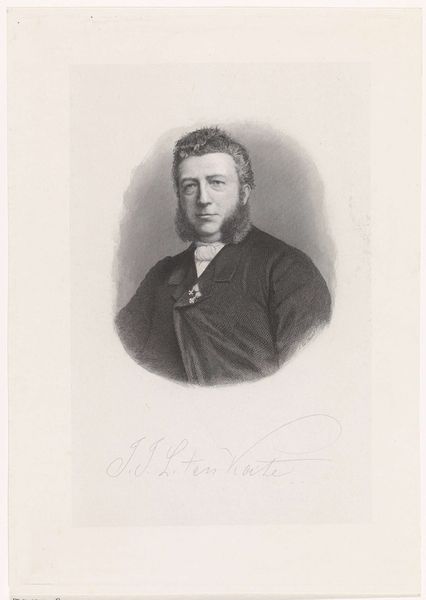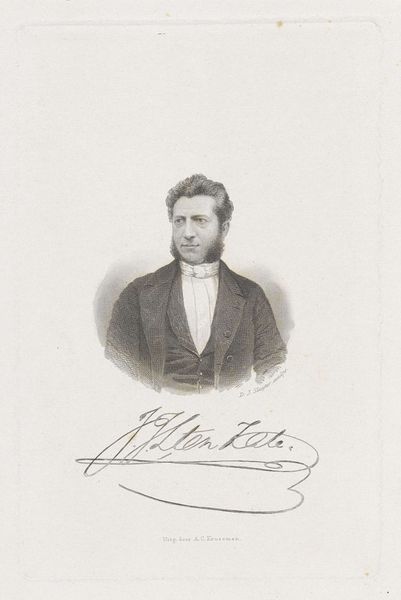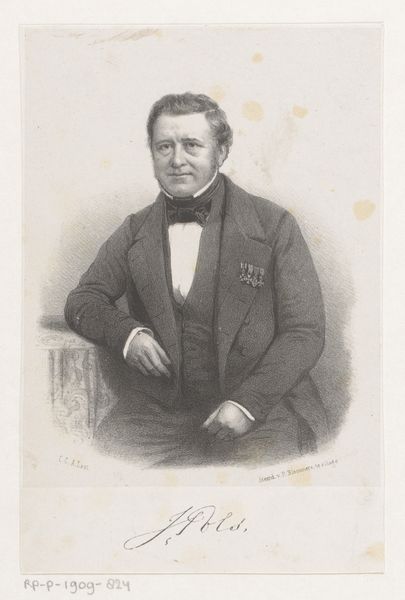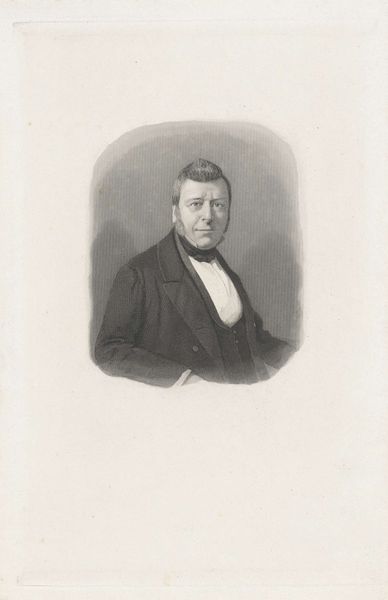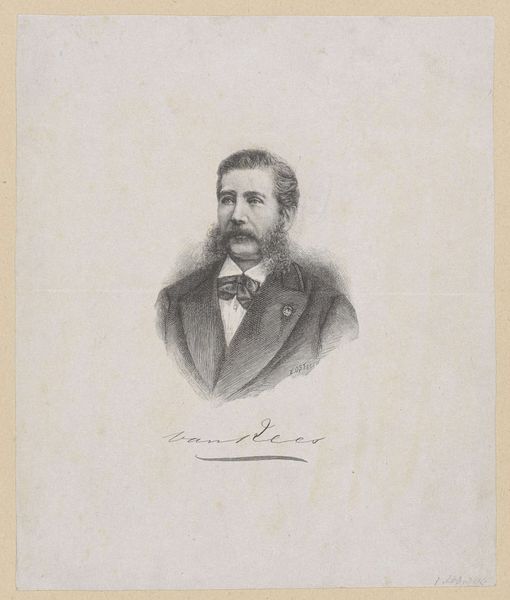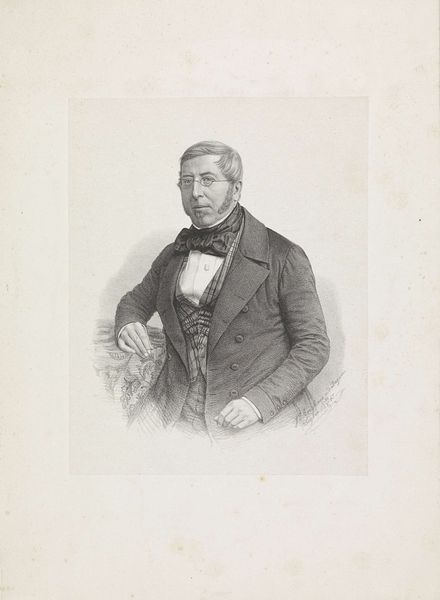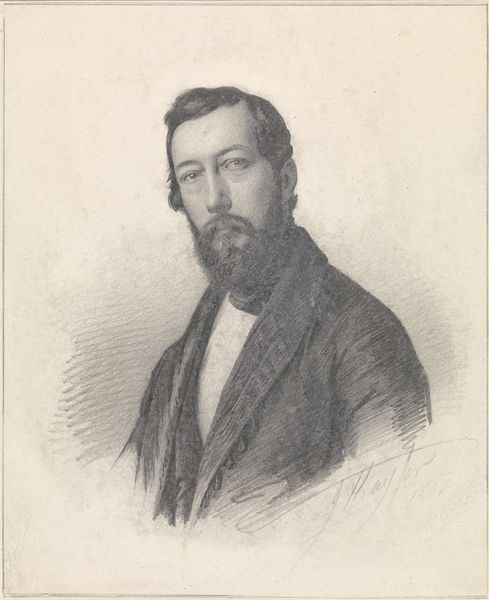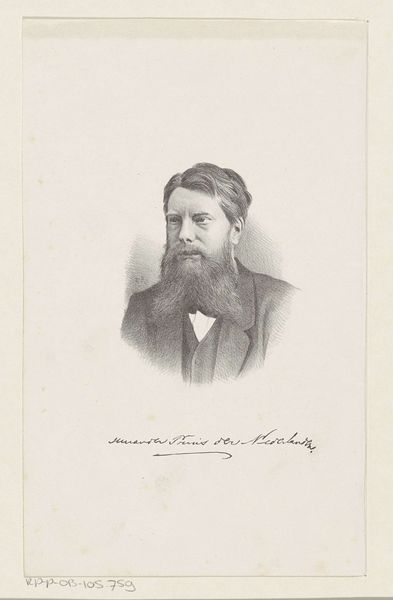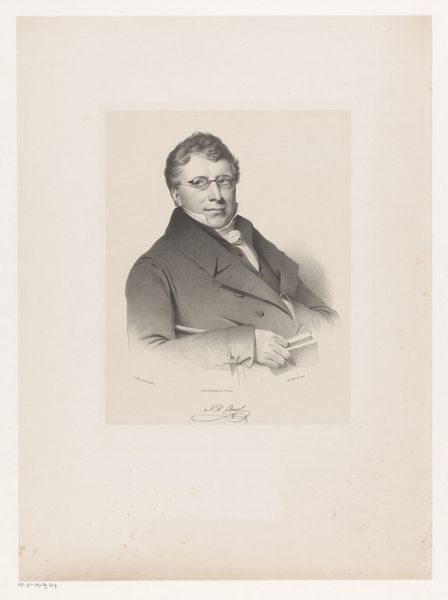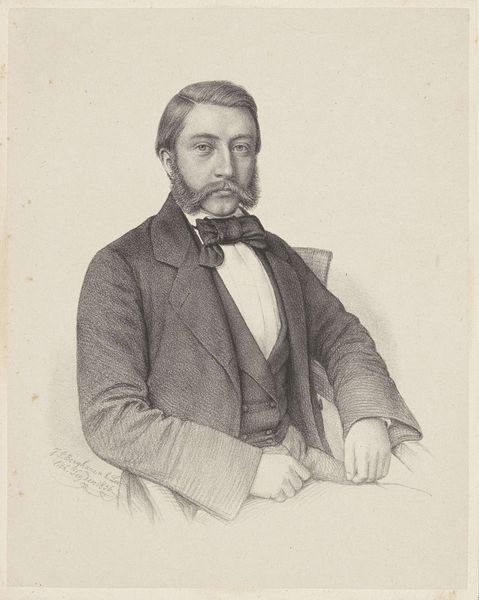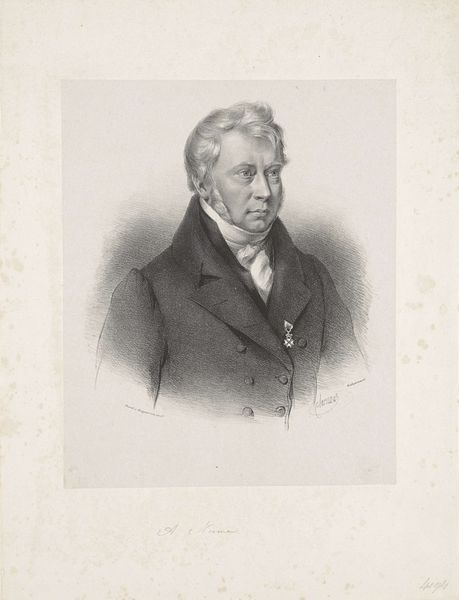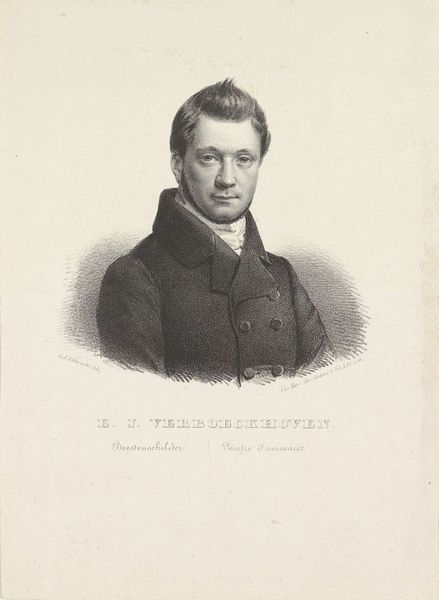
Portret van de dichter en predikant Jan Jacob Lodewijk ten Kate 1842 - 1873
0:00
0:00
drawing, graphite
#
portrait
#
pencil drawn
#
drawing
#
facial expression drawing
#
light pencil work
#
pencil sketch
#
portrait reference
#
idea generation sketch
#
pencil drawing
#
limited contrast and shading
#
graphite
#
portrait drawing
#
pencil work
#
academic-art
#
realism
Dimensions: height 178 mm, width 114 mm
Copyright: Rijks Museum: Open Domain
Editor: This is "Portret van de dichter en predikant Jan Jacob Lodewijk ten Kate," a graphite drawing from 1842 to 1873, held at the Rijksmuseum, created by Dirk Jurriaan Sluyter. The work feels very formal. The sitter is very serious. What symbols or imagery stand out to you? Curator: It's fascinating how this image carries a weight of respectability. Consider the beard, a strong symbol of Victorian masculinity and intellectualism. Note its carefully sculpted shape. Does that suggest anything about Ten Kate’s public image? How did people view clergymen and poets in this era? Editor: That controlled presentation definitely speaks to wanting to project a certain persona. Maybe that seriousness was part of being seen as trustworthy? Curator: Exactly. This links to the broader cultural understanding of religious figures. Also, look at the implicit narrative suggested through the drawing medium itself. Graphite renders soft lines. This softens what could be a stern image of masculinity. Why might the artist have chosen graphite rather than, say, oil paints, to portray Ten Kate? Editor: Maybe graphite implies something more approachable? Perhaps a less intimidating vision of leadership than if it had been rendered in something weightier like oil? Curator: Precisely. The medium reinforces an important cultural dialogue. Ten Kate isn't just a face. He is a representative of deeply rooted social and cultural values, intentionally shaped through symbolic choices. What new understanding has shifted for you, looking more deeply at this work? Editor: Thinking about it now, seeing it just as a portrait is reductive. It's like a mirror reflecting an entire society's expectations, all channeled through one person. Thanks! Curator: Indeed. It becomes less about the individual, more about the visual language used to reinforce power and morality.
Comments
No comments
Be the first to comment and join the conversation on the ultimate creative platform.
